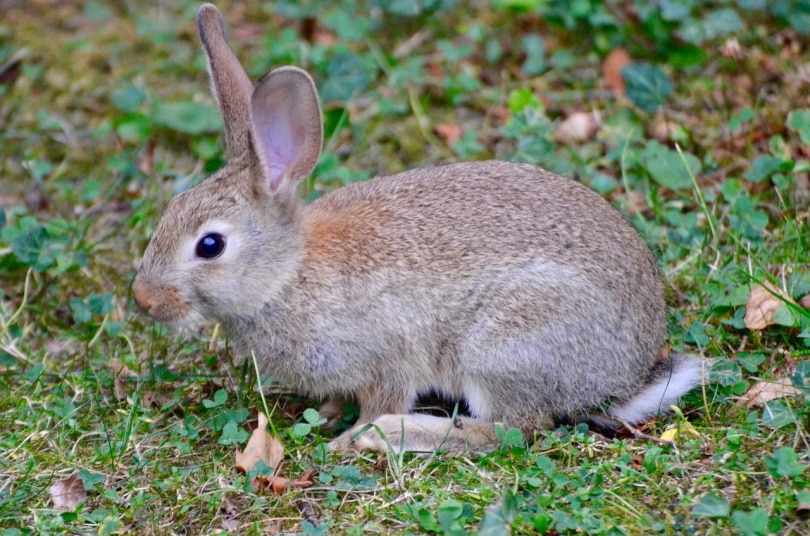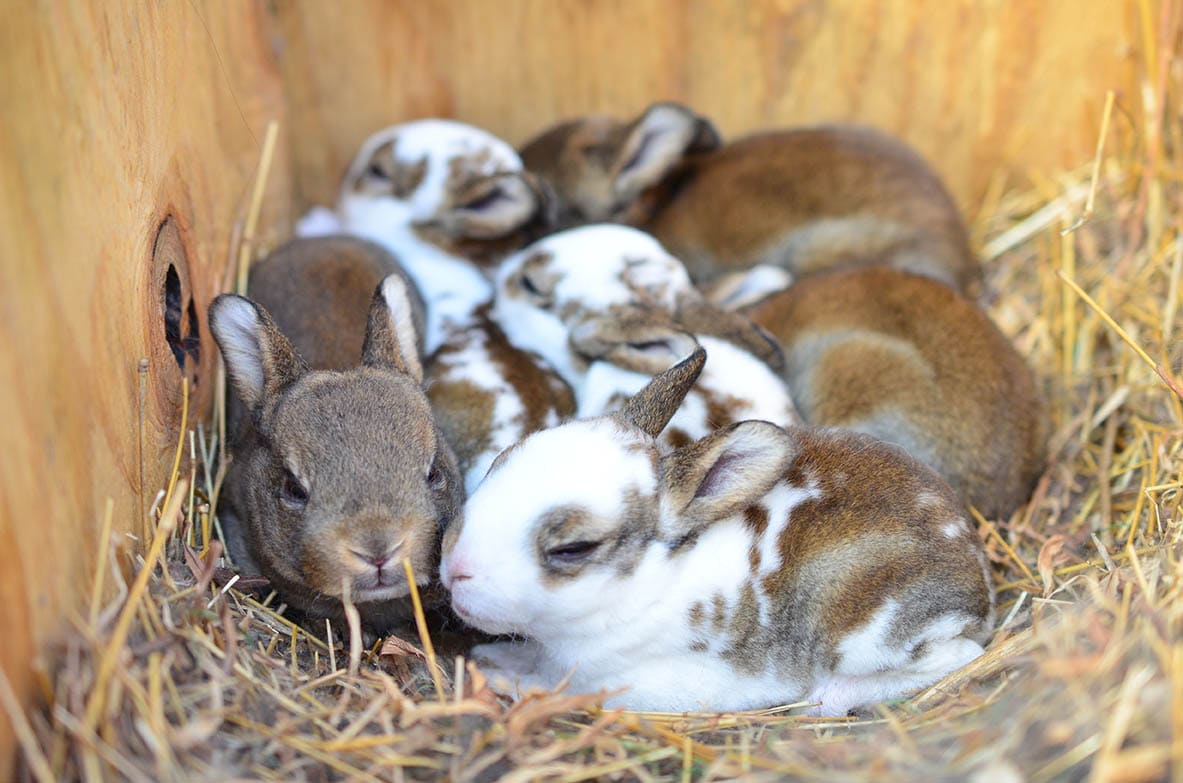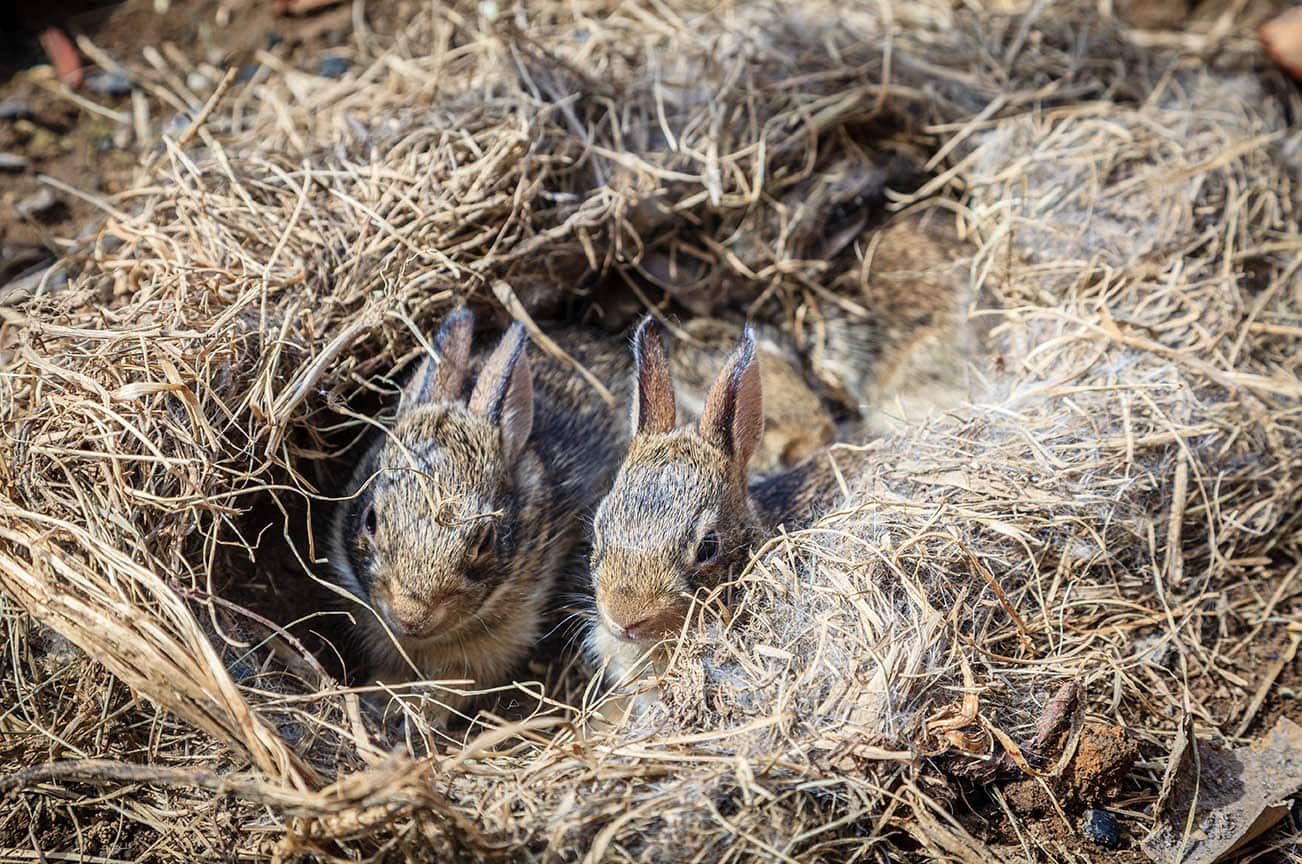
Click to Skip Ahead
You can get a bunny at a pet store or from a breeder, but you should never catch a wild bunny and try to keep them as a pet. But why is this the case, and what should you do if you find a baby bunny nest? We’ll answer those questions for you here, but if you’re considering keeping a wild bunny as a pet—don’t.
 Can You Keep a Wild Rabbit as a Pet?
Can You Keep a Wild Rabbit as a Pet?
No. Even if you think you know everything you need to care for a wild bunny successfully, it’s both illegal (depending on the state) and cruel to do so. Because of this, you should never keep a wild rabbit as a pet, no matter how cute they are or how ready you think you are to take care of one.

Top 4 Reasons Why You Shouldn’t Keep a Wild Rabbit as a Pet
While you might think you know what you need to know to care for a wild rabbit, there’s a plethora of reasons you shouldn’t. We’ve highlighted four of them for you here:
1. It’s Illegal
There are plenty of reasons why you shouldn’t catch and try to raise a wild rabbit, but did you know that it’s actually illegal to catch and raise wild rabbits in most of the United States without a permit?

2. It’s Hard to Tame Them
One reason you should never try to catch and raise wild rabbits is that it’s extremely hard to tame them. Wild rabbits don’t want to live in captivity. They’re used to the wild, and they like living that way.
This means that if you try to catch them and keep them in a hutch, they’re unlikely to be happy. Not only that but they’re more likely to bite and nip, and they definitely won’t want you petting them.
3. They Can Carry Diseases
Pet rabbits in captivity are far less likely to carry diseases you can catch compared to wild rabbits. Zoonotic diseases that wild rabbits can carry include ringworm, external parasites such as fleas, pasteurellosis and ringworm.

4. They Don’t Like It
Do you want to own a pet rabbit that doesn’t want you to own them? That’s the case with wild rabbits. Even if you get them to calm down a bit, which is quite challenging, that doesn’t mean they want to be there. Wild rabbits want to be in the wild, and it’s cruel to keep them anywhere else.
What to Do if You Uncover Baby Rabbits
Often people try to “rescue” baby rabbits because they find them in their yards and don’t know what else to do with them. It’s a pretty common occurrence since rabbits build their nests in relatively open areas, making yards a common nesting spot for them. But just because you discover the nest doesn’t mean their mother abandoned them, and it doesn’t mean they need you to take care of them.
1. Check for Obvious Injuries
Often when you discover a bunny nest it’s because you stepped on or near it or disturbed it in some other way. If this is the case, you’ll want to check on the bunnies before doing anything else. If there are signs of injury then contact your wildlife service department for advice. But as long as you don’t see bleeding or other obvious signs of injury, you should leave them in the nest.

2. Recover the Nest
If you peeked in to check on the baby bunnies, you should recover the nest with the original nesting material. Don’t find your own nesting material and don’t add to it; simply use what was already there to recover the nest. Even if you happen to accidentally touch the baby bunny, the mother will still come back, so leave them in there and cover the nest back up.
3. Mark the Nest
Sometimes, it’s tough to spot bunny nests, and if you don’t make it easier for you to find it again, there’s a chance you’ll accidentally disturb it again. That’s why we recommend marking the area with something like a garden flag. Put it near the nest but not right on it.
4. Leave It Alone!
Once you mark the nest, all you need to do is leave the nest alone! The mother bunny should be back to care for her young. Rabbit mothers typically visit their nests to feed their babies twice a day, usually around dusk and dawn. Let nature take its course and leave the bunnies and the nest alone, no matter how badly you want to intervene.

Final Thoughts
Now that you know a little more about why you shouldn’t try to raise a wild rabbit as a pet, all you need to do is leave them out there once you find them. It might seem like they need you to take care of them, but wild rabbits have been taking care of themselves long before humans started to intervene.
Featured Image Credit: Anne Katherine Jones, Shutterstock

 Can You Keep a Wild Rabbit as a Pet?
Can You Keep a Wild Rabbit as a Pet?






